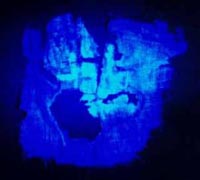 |
 |
 |
 |
 |
||
| Careers -> Cryptography |
|
Cryptography is the process of taking legible, readable data and transforming it into unreadable data for the purpose of secure transmission, and then using a key to transform it back into readable data when it reaches its destination. Ultraviolet photography is one of the prime methods of transforming this data into something readable. For example, there are secret messages on your credit cards and driver’s license that are visible only through ultraviolet light. These messages or symbols are placed there for a guarantee of authenticity. Ultraviolet photography is also used to expose other types of information that is invisible to the naked eye. Private investigators, dermatologists and forensic scientists use ultraviolet lights for this purpose. Archaeologists also use these types of lights to detect colourants in ancient textiles. Archaeometry is a fascinating field of study that combines archaeology with technological lab techniques, some of which include UV photography and X-Ray photography. Forensic Photography Brings Color Back To Ancient Textiles
Additional Links:
|
|
